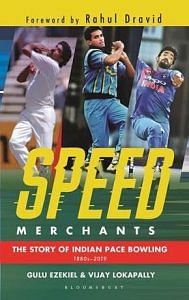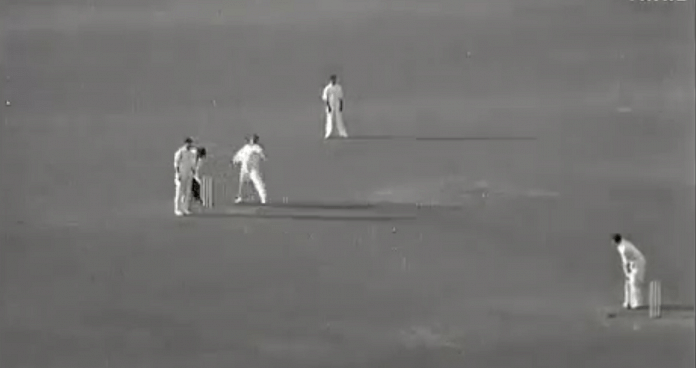The early years of Indian cricket, going back to the 1880s, is a story of pace, pace and more pace.
A few of express pace, many fast medium and some just medium pace/swing, these bowlers dominated the narrative of Indian cricket, extending through the 1950s even though spin bowling had come into its own in the previous decade.
Broken bones, fractured jaws and skulls, bruised bodies and bruised egos—even one apparent fatality—was the lot of visiting cricketers who toured India for both official and unofficial Test matches in the 1920s and ’30s.
Even homegrown batsmen were not spared from the fast bowling onslaught that saw visiting captains from Arthur Gilligan to Douglas Jardine—yes, the same Jardine of ‘Bodyline’ infamy—and Jack Ryder to Lord Lionel Tennyson cry foul at the ‘bumper barrage’ that greeted them at the hands of our pace battery.
It was not till 1926-27, however, that the Marylebone Cricket Club (MCC), which controlled the game in England, sent out their first official team to India led by England and Sussex captain Arthur Gilligan.
Who then were the early fast bowlers that made such an impact both in India and abroad?
Inevitably, these came from the Parsee community, which dominated the early cricket scene in India.
Foremost among them was certainly the fearsome opening pair of Mohammed Nissar and Ladhabhai Amar Singh Nakum. Their brilliant fast bowling in tandem in both official and unofficial Test matches in the 1930s was largely responsible for Indian cricket making a name for itself on the international scene in the early years. They were ably supported by the crafty Mohammad Jehangir Khan, all three coincidentally born in 1910.
Amar’s elder brother Ladhabhai Ramji Nakum, aka the ‘Kathiawar Terror’, was perhaps the most fearsome in terms of pace and intimidation of his era and had experienced foreign batsmen running for cover.
M J Gopalan, Sarobindu Nath (Shute) Banerjee, Mubarak Ali, M Salahuddin, Syed Nazir Ali (the first Indian bowler to capture the wicket of Don Bradman, playing for the Club Cricket Conference at Lord’s against the touring Australians in September 1930) and Dev Raj Puri—who played a small but historic part in Indian cricket—all these bowlers would surely have made a name for themselves on the world stage if India’s Test debut had come in the 1920s rather than 1932.
Also read: New mindset, intensity, bench strength — how pacers helped India thrash South Africa 3-0
Ramji: The Terror
It was Ramji who was generally considered to be the fastest of his generation and arguably the fastest Indian bowler of all time, though this can never be accurately proved.
But there’s a mystery surrounding a purported on-field incident. Did he actually kill a visiting English batsman?
According to an article in The Cricketer (‘Cut to the Double Quick’, July 2000) on the brothers by Rajkot-based writer Suresh Parekh (a friend of the family), Natwarsinhji Bhavsinhji, the Maharaja of Porbander had invited an English club side to play some friendly matches in 1926-27 and had instructed the fearsome brothers to go easy on his guests.
However, in the crowd was none other than the peerless Kumar Shri Ranjitsinhji (Ranji) who persuaded Ramji to bowl short-pitched deliveries. Ramji could not disobey as he was employed by Ranji as a cricket pro.
According to Parekh, armed with the new ball, one of Ramji’s deliveries rose unexpectedly from a length and hit the hapless batsman on the chest. He was stretchered off and hospitalized in Porbander before being shifted to Bombay for further treatment. ‘After regaining some health he was sent to England where he died a few days later.’
This incident, according to the article, infuriated the Maharaja who ordered Ramji to leave and threatened to shoot him if he saw him in his kingdom again.
Now the questions arise: what was the name of the batsman, which team was he representing? I contacted Parekh and he was not able to find out the answers.
I also got in touch with Andy Bull of the Guardian newspaper who maintains all English cricket-related deaths but he could find no trace of this particular incident. Australian Tom Gara maintains a database of Australian cricket fatalities and he too checked the English database.
The only fatality he could find was the well-known case of Roy Kilner, the English and Yorkshire all rounder who returned in April 1928 from one of his regular coaching and playing stints in India sponsored by the Maharaja of Patiala and died a week later from enteric fever at the age of 37.
Steven Lynch, in charge of obits for Wisden also could not find any evidence. In light of all the above it must therefore be considered an urban myth.
What is no myth or mystery, however, is the ferociousness with which Ramji bowled.
And it was Gilligan’s MCC side that felt his deadly sting during the historic tour of 1926-27.
A month before they were to play the first unofficial Test against ‘All India’ at Bombay in December, MCC faced a team with perhaps the longest name in cricket, Rajputana and Bombay, Baroda and Central India Railways in a two-day match on the dreaded coir matting pitch at Ajmer on which Ramji wrought terror in the 1920s.
Fast bowler George Geary, also relishing the matting, took 8 for 56 as Railways were dismissed for 155.
In a fiery opening burst of intimidatory bowling, Ramji dismissed Maurice Tate and Bob Wyatt cheaply and then came back to claim the wickets of John Parsons and Geary.
It was too much for the English. They had been in India for a month but had seen nothing like this.
MCC were struggling at 181 for 7 with only opener Andy Sandham among the top order batsmen surviving the onslaught.
Gilligan, who had been bowled for 5 by pace bowler Azim Khan, could take no more. He appealed to the Railways captain, the Maharawal of Dungapur, Lakshman Singh Bahadur to take Ramji out of the attack.
Like a good host, His Highness obliged and Sandham — scorer of the first Test triple century four years later in Kingston, Jamaica — duly got his century. MCC, no doubt heaving a collective sigh of relief, recovered to 287 all out. Ramji had figures of 23-1-81-4. The shell-shocked Englishmen were simply relieved to draw the game with all their bones intact.
 This edited excerpt from Speed Merchants: The Story of Indian Pace Bowling 1886 to 2019 by Gulu Ezekiel and Vijay Lokapally has been published with permission from Bloomsbury India.
This edited excerpt from Speed Merchants: The Story of Indian Pace Bowling 1886 to 2019 by Gulu Ezekiel and Vijay Lokapally has been published with permission from Bloomsbury India.







It must have been the pitches that made the bowlers fearsome. Not Speed.